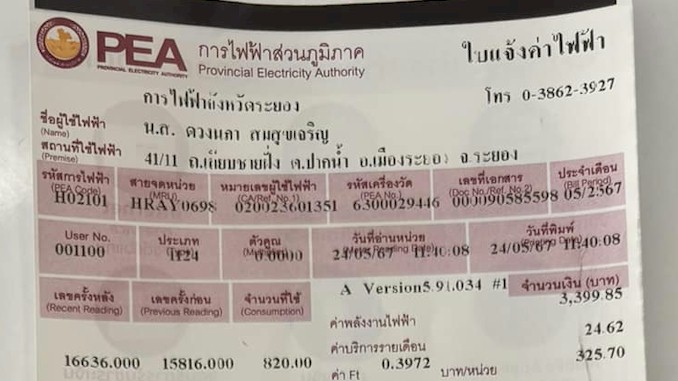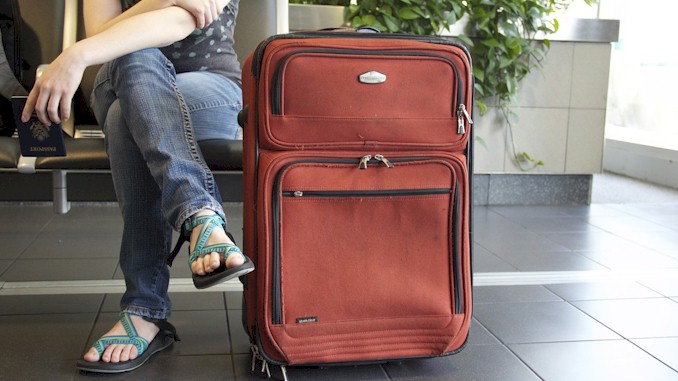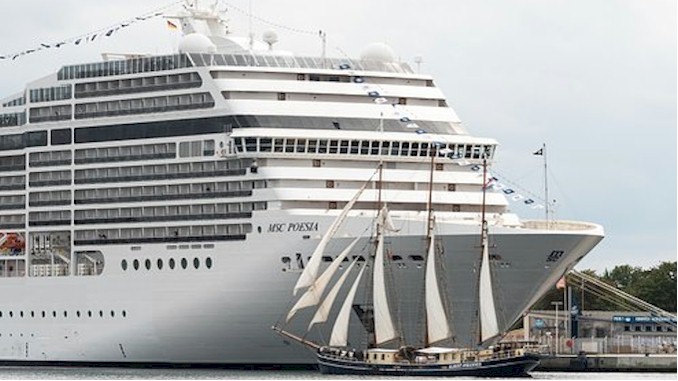Smooth Sailing: How to Beat Seasickness on Your Cruise
If you love cruising like me, then you’ve probably worried about getting seasick on a cruise. I totally get the feeling. I used to always get seasick on a boat when I was little. Now, over the years as I’ve been on many cruises, I know how to avoid getting seasick on a cruise. Here how:
As someone who has been on numerous cruises and suffered from seasickness in the past, I understand firsthand the importance of taking steps to prevent it. Through trial and error, I have found that choosing a cabin in the middle of the ship and close to the waterline, avoiding heavy meals and alcohol, and taking ginger supplements can be effective in avoiding seasickness. Additionally, taking breaks from activities involving motion and focusing on the horizon can help alleviate symptoms. With these tips, you can enjoy a comfortable and relaxing cruise without the unpleasantness of seasickness.
However, these are just a few of the many tips and tricks that can help prevent seasickness on a cruise. In the following sections, I will delve deeper into each of these methods, as well as provide additional recommendations that can help make your cruise experience as smooth and enjoyable as possible. Whether you’re a first-time cruiser or a seasoned sailor, there is always more to learn about avoiding seasickness. So, keep reading and discover how you can make the most out of your next cruise adventure.
Choosing the Right Cabin Location
Having experienced seasickness on previous cruises, I’ve learned firsthand the importance of choosing the right cabin location. Mid-ship cabins, which are located in the middle of the ship, tend to experience the least amount of motion and provide a more stable environment. This is because the middle of the ship is closest to the ship’s pivot point, or the center of gravity. As a result, the ship’s movements are less pronounced in this area, which can help prevent seasickness.
Another factor to consider is the cabin’s proximity to the waterline. Cabins located closer to the waterline tend to experience less motion than those located higher up on the ship. This is because the lower part of the ship is more immersed in the water, which can help absorb some of the ship’s movement. If you are particularly prone to seasickness, it’s a good idea to choose a cabin that is located as low and as close to the center of the ship as possible.
It’s also important to consider the cabin’s location in relation to the ship’s engines and propulsion systems. Cabins located near these areas can experience more noise and vibration, which can exacerbate seasickness. Therefore, it’s best to choose a cabin that is located away from these areas. If you are unsure of where the ship’s engines are located, you can consult the ship’s deck plan or ask the cruise line’s customer service representative for guidance.
In addition to the physical location of the cabin, it’s also important to consider the type of cabin you choose. Balcony cabins, while providing a great view, can also expose you to more wind and sea spray, which can exacerbate seasickness. If you are particularly susceptible to seasickness, it may be best to opt for an interior cabin or one with a window that can be closed.
It’s also important to be mindful of your cabin’s location in relation to the ship’s stabilizers. Stabilizers are mechanical devices that help reduce the rolling motion of the ship. Cabins located closer to the stabilizers may experience less motion, while cabins located further away may experience more. This is because the stabilizers are typically located towards the back of the ship. If you are unsure of where the stabilizers are located, you can consult the ship’s deck plan or ask the cruise line’s customer service representative for guidance.
Finally, it’s worth noting that cabin location is just one of many factors that can contribute to seasickness. Even if you choose the best cabin location possible, there is still a chance that you may experience some degree of seasickness. Therefore, it’s important to be prepared with additional strategies, such as taking medication or using natural remedies, to help alleviate symptoms.
In conclusion, choosing the right cabin location can play a significant role in preventing seasickness on a cruise. By considering factors such as the cabin’s location in relation to the ship’s center of gravity, waterline, engines, propulsion systems, and stabilizers, you can increase your chances of a more comfortable cruise experience. However, it’s important to keep in mind that cabin location is just one piece of the puzzle and additional strategies may be necessary to fully prevent or alleviate seasickness.
Avoiding Heavy Meals and Alcohol
As an experienced cruiser who has battled seasickness on multiple occasions, I know firsthand that what you eat and drink onboard can have a significant impact on your comfort level. Heavy meals and alcohol are two things that should be avoided or consumed in moderation to keep seasickness at bay.
Heavy meals can be particularly problematic as they put added strain on your digestive system. When your body is working hard to digest a big meal, it can be more difficult to adjust to the movement of the ship. Plus, a full stomach can make you feel even more uncomfortable if you do start to feel seasick. Instead of going for the heavy options, opt for lighter, more easily digestible meals throughout the day. Think fruits, vegetables, and lean proteins, and try to eat smaller, more frequent meals rather than a few big ones.
Alcohol is another culprit that can make seasickness worse. It can cause dehydration, affect your balance, and make it harder for you to adjust to the motion of the ship. If you do decide to indulge, be sure to do so in moderation and keep hydrated by drinking plenty of water throughout the day. And if you’re prone to seasickness, it’s probably best to skip the booze altogether.
It’s also worth noting that caffeine can contribute to dehydration, which can make seasickness symptoms worse. So while that morning cup of coffee might be a must-have, it’s best to limit your intake of caffeinated beverages throughout the day.
Fortunately, many cruise lines offer healthy dining options that make it easy to stick to a lighter, healthier diet while onboard. Look for options like fresh fruit, salads, and grilled fish to keep your stomach happy and your seasickness at bay.
By being mindful of what you eat and drink while onboard, you can significantly reduce your chances of experiencing seasickness and enjoy a more comfortable, relaxing cruise vacation.
Medication and Natural Remedies for Seasickness
If you’re prone to seasickness or are worried about it, there are a variety of medications and natural remedies available that can help. As someone who has dealt with seasickness in the past, I’ve tried a variety of options and have found some to be more effective than others.
Medications like Dramamine and Bonine are commonly used to prevent and treat seasickness. They work by suppressing the vestibular system, which is responsible for balance and equilibrium. These medications can be effective, but they do come with potential side effects like drowsiness and dry mouth. Be sure to talk to your doctor before taking any medication to make sure it’s safe for you, especially if you’re taking other medications or have any health conditions.
Another option is the Transderm Scop patch, which is worn behind the ear and slowly releases medication to prevent seasickness. This option can be particularly useful for those who don’t like taking pills or who want a longer-lasting solution. However, it also comes with potential side effects like dry mouth, dizziness, and blurred vision.
If you prefer natural remedies, there are several options worth trying. Ginger is a well-known natural remedy for nausea and can be taken in several forms, such as ginger chews or tea. Some studies have shown that it can be effective in reducing seasickness symptoms. Peppermint is another option that can be effective in calming an upset stomach, and can be consumed as tea or in the form of essential oil.
Acupressure wristbands are another natural remedy that can help alleviate seasickness symptoms. These wristbands use pressure on specific points on the wrist to reduce nausea and can be a good option for those who want to avoid medication or natural remedies that are ingested.
Ultimately, the best option for you will depend on your personal preferences and health history. It’s always a good idea to talk to your doctor or a travel medicine specialist to discuss which options might be best for you. With a bit of planning and preparation, you can significantly reduce your chances of experiencing seasickness and enjoy a comfortable, relaxing cruise vacation.
Other Strategies for Reducing Seasickness
As an experienced cruiser, I’ve learned that in addition to the standard methods of reducing seasickness, there are other techniques that can be effective in minimizing symptoms.
- Focus on the horizon: One method that has worked for me is to focus on a fixed point on the horizon when I feel queasy. By looking at a distant point such as a cloud formation, I can help my brain reorient itself and reduce the motion signals that trigger nausea. Some experts recommend standing outside the ship and facing the direction of the waves to further reduce symptoms.
- Get fresh air: Spending time on deck can also help alleviate symptoms. As an experienced cruiser, I know that fresh air and feeling the breeze can make a big difference. However, it’s important to dress appropriately for the weather and avoid direct exposure to the sun or wind. If the weather is inclement, it’s best to stay inside the ship where it is stable and comfortable.
- Acupressure and acupuncture: Some people find relief from seasickness by using acupressure bands or undergoing acupuncture treatment. I have personally tried acupressure bands and found them to be effective in reducing my symptoms. These techniques stimulate specific pressure points or energy channels in the body, which are believed to regulate the inner balance and alleviate nausea. If you’re interested in trying these techniques, it’s important to consult with a qualified practitioner and ensure that the treatment is safe and appropriate for you.
- Stay hydrated: As an experienced cruiser, I know that dehydration can worsen the symptoms of seasickness. That’s why it’s important to drink plenty of water or other fluids that do not contain alcohol or caffeine. I find that sipping on ginger ale or electrolyte solutions can also help replenish lost fluids and reduce nausea. It’s best to avoid drinking too much alcohol or caffeine, as they can dehydrate the body and worsen symptoms.
- Relaxation techniques: Finally, I have found that practicing relaxation techniques such as deep breathing and visualization can help reduce stress and anxiety, which are known triggers of seasickness. I also enjoy listening to calming music or engaging in light exercise such as yoga or tai chi. These techniques can help promote a sense of calm and balance, which can in turn reduce the severity of seasickness symptoms.
- Prescription medication: In some cases, prescription medication may be necessary to manage seasickness. These medications work by blocking the signals that trigger nausea in the brain. If you’re considering medication, it’s important to talk to your doctor or a qualified healthcare professional to determine which option is right for you. Some medications may cause drowsiness or other side effects, so it’s important to take them as directed and avoid operating heavy machinery or driving while under their influence.
- Alternative therapies: In addition to acupressure and acupuncture, there are a number of alternative therapies that have been used to manage seasickness. These include herbal remedies, aromatherapy, and hypnosis. While some of these therapies may be effective for certain individuals, there is limited scientific evidence to support their use. It’s important to consult with a qualified practitioner and conduct thorough research before trying any alternative therapy for seasickness.
By using these additional strategies, I have been able to minimize the impact of seasickness and enjoy my cruise to the fullest. However, it’s important to remember that everyone’s experience with seasickness is different, and what works for one person may not work for another. The key is to be prepared and try different methods until you find what works best for you.
Additional Tips for a Comfortable Cruise Experience
As someone who has been on numerous cruises, I have learned that there are some additional steps you can take to ensure that your cruise is not only free of seasickness but also comfortable and enjoyable. Here are some additional tips:
- Pack smart: Make sure to bring comfortable shoes and clothing for all occasions. Comfortable shoes are a must for shore excursions, while casual clothing is perfect for daytime activities. You may also want to pack something dressier for formal nights.
- Choose the right cabin: The location of your cabin can make a big difference in your comfort level. Midship cabins tend to experience less movement than cabins located at the front or back of the ship. If you’re sensitive to noise, consider booking a cabin on a higher deck or away from busy areas.
- Make use of the ship’s amenities: Most cruise ships have a range of amenities to keep passengers entertained and comfortable. Take advantage of the pool, spa, fitness center, and other facilities to relax and unwind.
- Stay active: While it’s tempting to lounge around all day, staying active can help you feel your best. Take advantage of the ship’s fitness center, participate in onboard activities, and join shore excursions to get some exercise and fresh air.
- Stay hydrated: It’s important to drink plenty of water while on a cruise. Not only does dehydration exacerbate seasickness symptoms, but it can also lead to other health issues. Make sure to drink water regularly throughout the day and avoid excessive alcohol consumption.
- Get plenty of rest: It’s easy to get caught up in the excitement of a cruise and stay up late every night, but getting enough rest is crucial for feeling your best. Make sure to get at least 7-8 hours of sleep each night, and take naps if you need to.
- Plan ahead: To make the most of your cruise experience, plan ahead and book shore excursions and specialty dining reservations in advance. This can help you avoid long lines and ensure that you don’t miss out on any activities that you’re interested in.
By following these additional tips, you can ensure that your cruise experience is not only free of seasickness but also comfortable and enjoyable. Remember to take care of yourself and make the most of all that your cruise has to offer.







